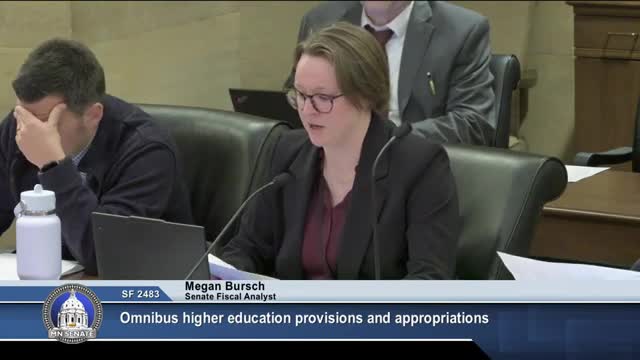Minnesota budget outlines changes in higher education funding and Mayo Clinic cuts
April 10, 2025 | Higher Education, Senate, Committees, Legislative, Minnesota
Thanks to Scribe from Workplace AI , all articles about Minnesota are free for you to enjoy throughout 2025!

This article was created by AI using a video recording of the meeting. It summarizes the key points discussed, but for full details and context, please refer to the video of the full meeting. Link to Full Meeting
One notable discussion centered on a proposed increase of $1,558,000 per biennium for emergency assistance grants for post-secondary students. However, this increase is offset by a direct appropriation change, resulting in a net zero impact on funding. Similarly, a $400,000 biennium increase for the Hunger Free Campus initiative was also reported as a net zero change due to the restructuring of funding distribution.
The committee also addressed a substantial proposed cut of $3,598,000 per biennium to the Mayo Clinic, which would eliminate all funding for the Mayo Clinic School of Medicine and Family Medicine Residency programs. This reduction has raised concerns about the potential impact on medical education and training in the state.
Further amendments discussed included changes to the distribution methods for emergency assistance and Hunger Free Campus programs, which will now be administered solely by the Office of Higher Education for private and tribal colleges. Additionally, the committee highlighted the extension of appropriations for the state grant program, allowing funds allocated for 2026 and 2027 to remain available until June 30, 2029.
The meeting also covered adjustments to the Bridal College Supplemental Assistance Grant Program and the relocation of funds for Northstar Promise Scholarships to a special revenue account, indicating a shift in how these funds will be managed.
Overall, the discussions reflect ongoing efforts to streamline funding processes while addressing the financial needs of students and educational institutions in Minnesota. The committee's decisions will play a crucial role in shaping the future of higher education funding in the state.
Converted from Committee on Higher Education - 04/08/25 meeting on April 10, 2025
Link to Full Meeting
Comments
View full meeting
This article is based on a recent meeting—watch the full video and explore the complete transcript for deeper insights into the discussion.
View full meeting